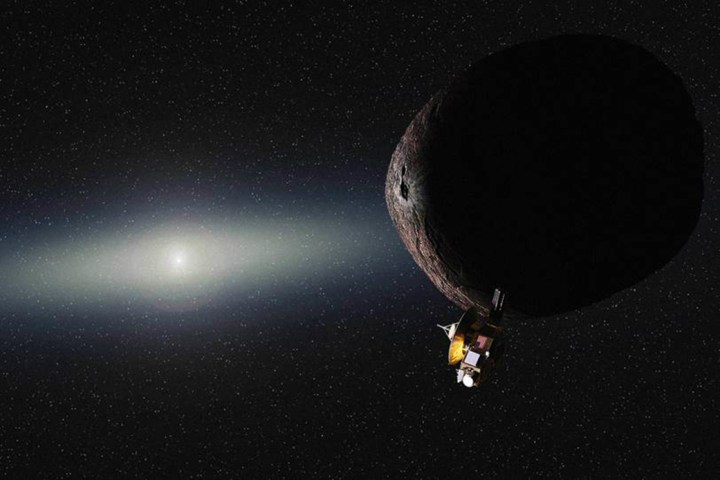
In other words, while your life may be fleeting and cosmically irrelevant, you now have the opportunity to be immortalized in the annals of human history by temporarily nicknaming this drifting hunk of space leftovers.
New Horizons was hurled into space with some extra hydrazine fuel onboard for a potential Kuiper belt objects (KBO) flyby from the get-go. And in 2014, NASA and the New Horizons team located three such KBOs all with possible flyby dates in late 2018 or in 2019. After much consideration, NASA finally set its target — and on January 1, 2019, the spacecraft will approach a small KBO (or potentially multiple KBOs) located more than four billion miles from our planet.
Currently, the object is known as (486958) 2014 MU69 or informally (presumably at cosmic cocktail parties) as MU69 for short. Unfortunately, the series of numbers and digits doesn’t really roll off the tongue — at all. That’s where us Earthlings come into the picture.
“New Horizons made history two years ago with the first close-up look at Pluto, and is now on course for the farthest planetary encounter in the history of spaceflight,” explained Thomas Zurbuchen, associate administrator for NASA’s Science Mission Directorate in Washington. “We’re pleased to bring the public along on this exciting mission of discovery.”
The SETI Institute of Mountain View, California is hosting the campaign to name this KBO, and the website currently lists eight of the early frontrunners being considered. These preliminary nominations names include everything from, Mjölnir (Thor’s hammer in Norse mythology) to a fictional planet from the now defunct television series Babylon 5. (This nomination form can be found on the official New Horizons‘ site.)
Per the guidelines, NASA is “particularly interested in nicknames that are appropriate for the first exploration of a cold, distant, ancient world at the outer frontier of the solar system.” Seeing as NASA still doesn’t know exactly how many objects it will be naming, the team suggests proposing two ore more names.
It’s important to note that the contest will not be considering names with religious or political significance. So, unfortunately, while “Tronald Dump” might be a shoo-in for a cold, fringe, lifeless hunk of organic matter, NASA won’t be having any of it. Nominations and votes will be accepted until 3PM (EST) December 1 and the team will reveal their pick in January 2018. This name will later be submitted to the International Astronomical Union for the final stamp of approval.


